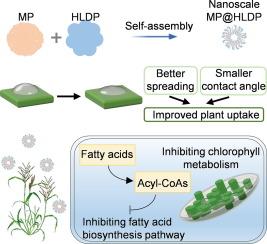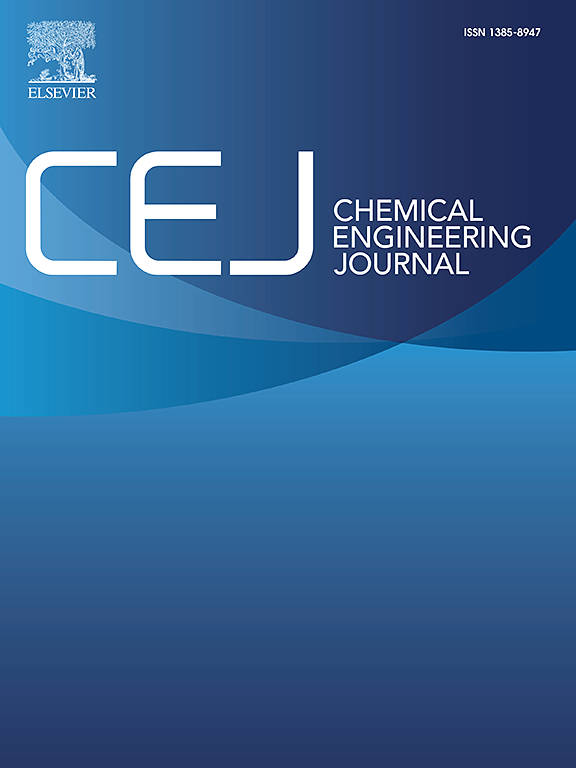Preparation of a smart nano-herbicide MP@HLDP with strong permeability performance improves herbicidal activity while reducing the adverse impacts
IF 13.3
1区 工程技术
Q1 ENGINEERING, CHEMICAL
引用次数: 0
Abstract
Effectively increasing the herbicidal activity and utilization rate is vital for weed-sustainable management. Nanotechnology can efficiently be used to improve the utilization rate and enhance the efficacy of herbicides for advanced modern sustainable agriculture. Herein, a novel smart delivery system was developed to promote permeability performance and precision targeting of weeds for enhanced herbicidal activity. The current study designed and applied an efficient and eco-friendly nano-herbicide via metamifop (MP) modified by hydrophilic and lipophilic diblock polymer (HLDP), namely MP@HLDP. The HLDP was assembled with MP via electrostatic interaction, and the spontaneous complexation of MP with HLDP formed nearly spherical nanoparticles. The presence of HLDP reduced the contact angle of MP while increasing its retention, resulting in better foliar wettability and easier spreading of the droplets on weed leaves. Meanwhile, the plant uptake of MP@HLDP was enhanced, remarkably improving its herbicidal activity toward weed Echinochloa crus-galli (E. crusgalli), when compared to the commercial emulsion oil and technical compound even at a 30% reduced dosage. The conjoint analysis of transcriptomic and metabolome data indicated activation of the plant death responses by MP@HLDP nanoparticles through inhibiting the fatty acid biosynthesis pathway and chlorophyll metabolism. The safety evaluation of MP@HLDP nanoparticles on rice crops and systematic model nontarget organism revealed good safety to rice seedlings with reduced acute toxicity to aquatic zebrafish. Overall, new insights into creating an efficient and environmentally friendly herbicide nano-formulation were provided, promising for use in sustainable agriculture production.

求助全文
约1分钟内获得全文
求助全文
来源期刊

Chemical Engineering Journal
工程技术-工程:化工
CiteScore
21.70
自引率
9.30%
发文量
6781
审稿时长
2.4 months
期刊介绍:
The Chemical Engineering Journal is an international research journal that invites contributions of original and novel fundamental research. It aims to provide an international platform for presenting original fundamental research, interpretative reviews, and discussions on new developments in chemical engineering. The journal welcomes papers that describe novel theory and its practical application, as well as those that demonstrate the transfer of techniques from other disciplines. It also welcomes reports on carefully conducted experimental work that is soundly interpreted. The main focus of the journal is on original and rigorous research results that have broad significance. The Catalysis section within the Chemical Engineering Journal focuses specifically on Experimental and Theoretical studies in the fields of heterogeneous catalysis, molecular catalysis, and biocatalysis. These studies have industrial impact on various sectors such as chemicals, energy, materials, foods, healthcare, and environmental protection.
 求助内容:
求助内容: 应助结果提醒方式:
应助结果提醒方式:


